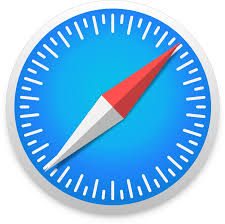Contents
HTML Ordered List: Main Tips
- Using
<ol>tags, you can create HTML ordered lists of items. - The <li> elements that are descendants of
<ol>define list items. - To create unordered lists, use <ul> tag.
- HTML
oltag supports all global attributes.
Using ol Tags
By using HTML ol tags in a document, you can create HTML numbered lists:
<ol>
<li>Action</li>
<li>Adventure</li>
<li>Thriller</li>
<li>Comedy</li>
</ol>HTML ordered lists can also be nested:
<ol>
<li>Coffee</li>
<li>Breakfast
<ol>
<li>Eggs</li>
<li>Bacon</li>
<li>Toast</li>
</ol>
</li>
<li>Cake</li>
</ol>
- Easy to use with a learn-by-doing approach
- Offers quality content
- Gamified in-browser coding experience
- The price matches the quality
- Suitable for learners ranging from beginner to advanced
- Free certificates of completion
- Focused on data science skills
- Flexible learning timetable

- Simplistic design (no unnecessary information)
- High-quality courses (even the free ones)
- Variety of features
- Nanodegree programs
- Suitable for enterprises
- Paid Certificates of completion

- A wide range of learning programs
- University-level courses
- Easy to navigate
- Verified certificates
- Free learning track available
- University-level courses
- Suitable for enterprises
- Verified certificates of completion
Mostly Used ol Tag Attributes
The type attribute defines the type of numbering to use:
| Value | Description |
|---|---|
| 1 | Numbers (default value) |
| I | Uppercase Roman numerals |
| i | Lowercase Roman numerals |
| A | Uppercase letters |
| a | Lowercase letters |
<ol type="I">
<li>Burger</li>
<li>Pizza</li>
<li>Sandwich</li>
</ol>HTML numbered list starts from number 1 by default. To change that, you can use the start attribute. It defines a start value for numbering the HTML ordered list. start should always be defined in a number, no matter the chosen numbering type:
<ol start="11">
<li>Eleven</li>
<li>Twelve</li>
<li>Thirteen</li>
</ol>Note: both start and type have been deprecated in HTML4 and reintroduced again in HTML5.
Newly introduced in HTML5, the reversed attribute sets the ordering of the list to descending:
<ol reversed>
<li>Apple</li>
<li>Orange</li>
<li>Mango</li>
</ol>compact rendered the list in a compact style. However, it has been deprecated in HTML5 and should not be used:
<ol compact>
<li>Action</li>
<li>Adventure</li>
<li>Thriller</li>
</ol>Tip: instead of compact, use CSS line-height property. A value of 80% will give a very similar effect.
Browser support

Chrome

Edge

Firefox

IE

Opera

Safari
Mobile browser support

Chrome

Firefox

Opera

 HTML
HTML  CSS
CSS  PHP
PHP  JavaScript
JavaScript  SQL
SQL  Bootstrap
Bootstrap  Solidity
Solidity  jQuery
jQuery  Git
Git  Chrome DevTools
Chrome DevTools  C++
C++  Python
Python 



